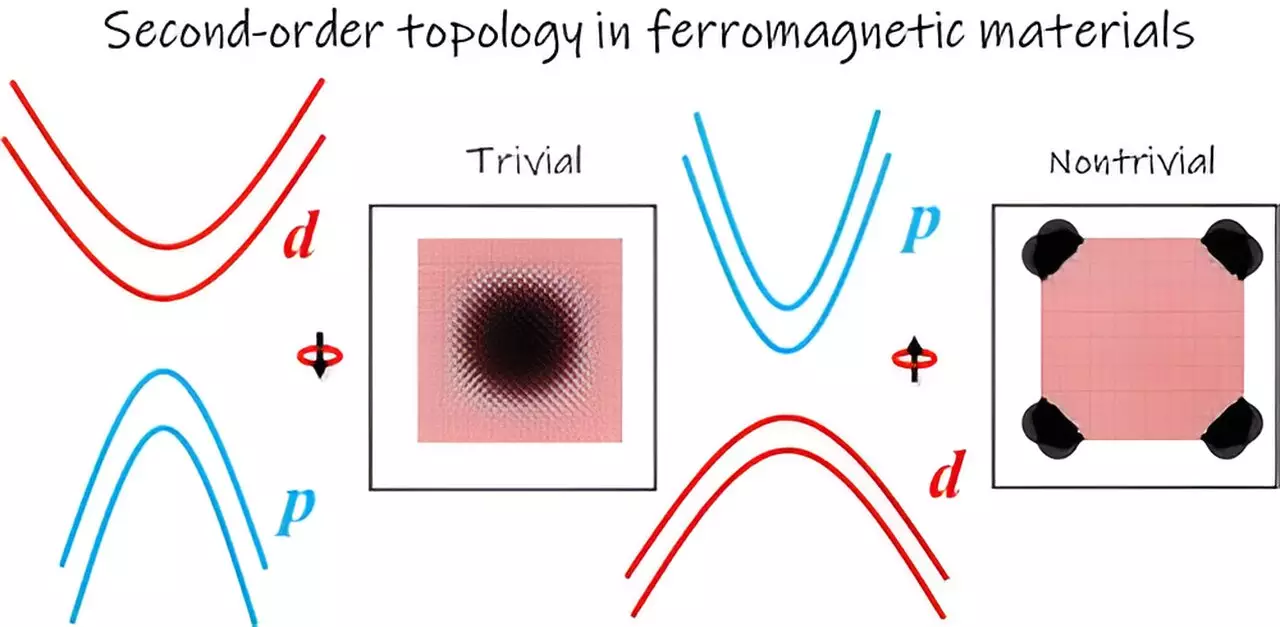The realm of materials science is witnessing a groundbreaking shift with the advancement of spintronics—a transformative area aiming to utilize electron spin as a means to convey information. Researchers from Monash University, particularly part of the FLEET Center, have unveiled a pioneering strategy centered on intrinsic magnetic second-order topological insulators (TIs). These materials are not merely academic curiosities; they hold immense potential in revolutionizing the future of electronics, particularly in enhancing data storage and processing efficiency.
Topological insulators are remarkable due to their unique electronic properties. These materials can be insulating in their interior while allowing electrons to navigate their surface, where they essentially behave in an unimpeded manner. Within three-dimensional structures such as Bi2Se3, the development of two-dimensional Dirac fermions on the surface is a significant highlight. An extension of this concept has led researchers to explore second-order topological insulators, which challenge conventional understanding by showcasing (m-2)-dimensional boundary states in m-dimensional materials.
Despite the promise these materials hold, inherent challenges remain. Intrinsic ferromagnetic semiconductors are generally characterized by strong electron-electron interactions, which frequently hinder effective electron transport between neighboring atoms. This phenomenon results in an atomic-like, insulating system that lacks topological properties, creating a barrier for technological applications.
Dr. Zhao Liu and Professor Nikhil Medhekar led a meticulous study aimed at overcoming this hurdle. Their findings suggest an elegant solution by manipulating the arrangement of atomic orbitals within certain ferromagnetic semiconductors. Under standard conditions, these materials display normal ordered p-d orbitals, where p orbitals are energetically favored and facilitate super-exchange interactions between metal cations. However, the fascinating possibility of inverted p-d orbital arrangements opens up new horizons for achieving nontrivial topological phases.
Inverted Orbital Order: A Breakthrough Discovery
The research team made a pivotal discovery: in select intrinsic ferromagnetic semiconductors, the p orbitals derived from ligand anions can outstrip the d orbitals from metal cations concerning energy. This phenomenon catalyzes an inverted orbital arrangement, challenging traditional understandings of p-d interaction. The implication of this inversion is profound; it directly influences the material’s topological characteristics, offering a pathway for the existence of nontrivial topological phases, which are crucial for spintronic applications.
Utilizing advanced density-functional theory calculations alongside wave function symmetry analyses, the researchers pinpointed two promising candidates for intrinsic magnetic second-order topological insulators: 1T-VS2 and CrAs. The former exhibits a hexagonal lattice structure, while the latter showcases a square lattice. In both materials, a striking differentiation occurs between the spin polarized channels—the spin-up channel demonstrates inverted p-d orbitals indicative of nontrivial topology, contrasting with the trivial topology seen in the spin-down channel.
Verifying the theoretical predictions becomes imperative for the transition from laboratory findings to practical applications. To this end, the structurally unique configurations of 1T-VS2 and CrAs suggest utilizing spin-polarized scanning tunneling microscopy. This technique promises to reveal the localized states at the corners of these materials, accentuating the practical viability of harnessing their topological properties.
Professor Medhekar has also drawn intriguing parallels with Kondo insulators, suggesting the potential for discovering second-order topological Kondo insulators. By extending the implications of the research, this opens new inquiries that may further our understanding of topological phenomena in materials science.
The research conducted by the team at Monash University not only addresses a critical gap in our understanding of intrinsic magnetic second-order topological insulators but also propels the field of spintronics forward. The exploration of inverted p-d orbital orders in materials such as 1T-VS2 and CrAs marks a significant milestone that could lead to the next generation of electronic devices. As researchers continue to navigate these complex phenomena, the possibilities for innovation in information technology remain boundless, signaling an exciting frontier for both theoretical research and practical application.


Leave a Reply